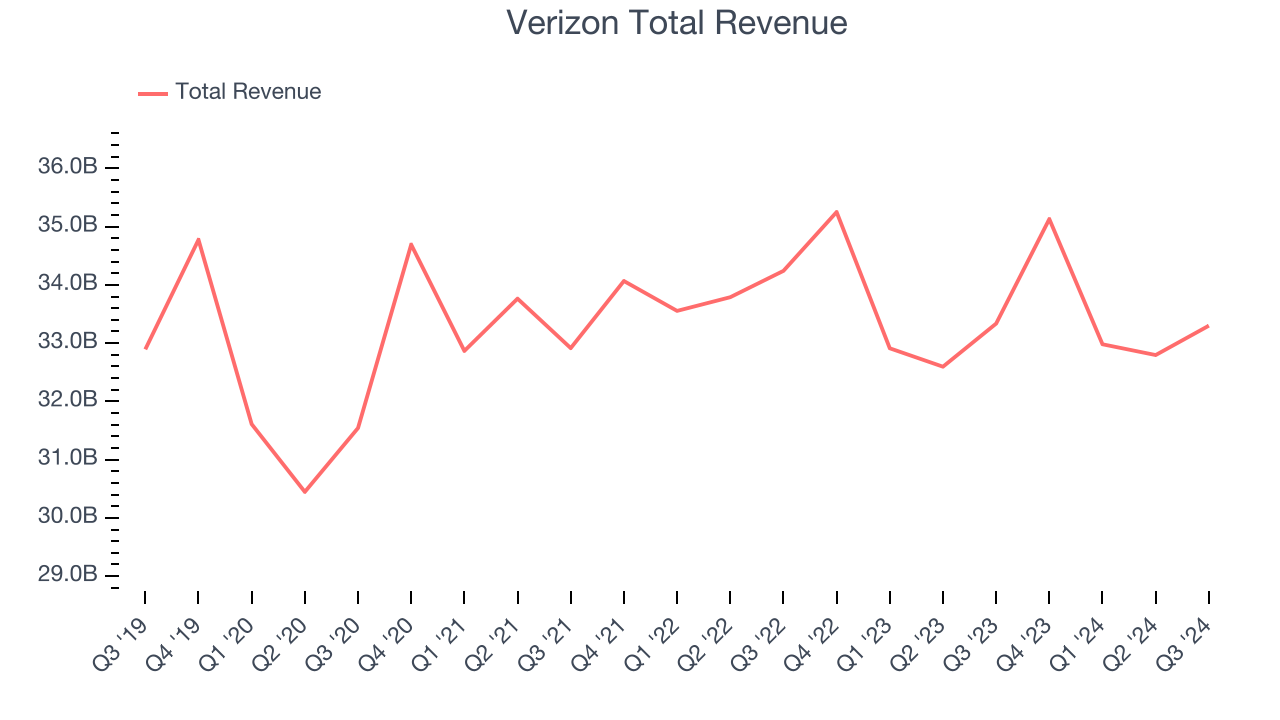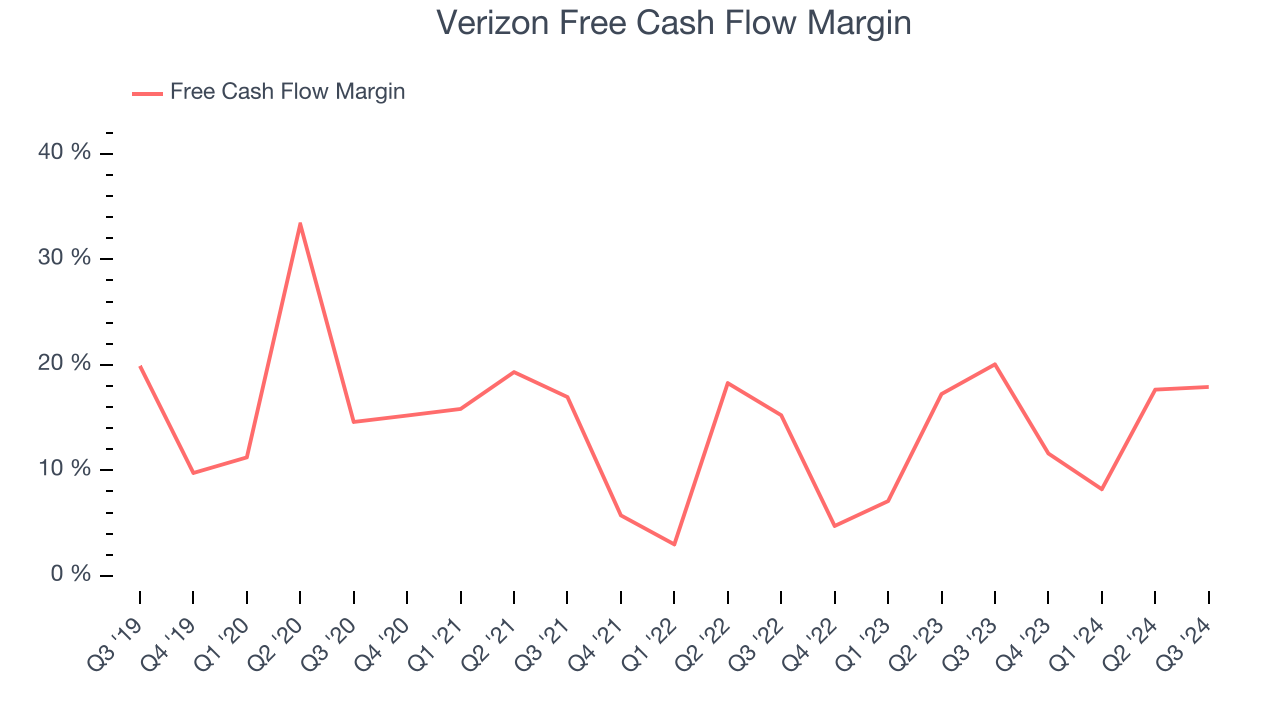Telecommunications giant Verizon (NYSE:VZ) met Wall Street’s revenue expectations in Q3 CY2024, but sales were flat year on year at $33.3 billion. Its non-GAAP profit of $1.19 per share wasalso in line with analysts’ consensus estimates.
Is now the time to buy Verizon? Find out by accessing our full research report, it’s free.
Verizon (VZ) Q3 CY2024 Highlights:
- Revenue: $33.3 billion vs analyst estimates of $33.42 billion (in line)
- Total postpaid phone net adds: 239k vs analyst estimates of 240k (slight miss)
- Adjusted EPS: $1.19 vs analyst expectations of $1.18 (in line)
- EBITDA: $12.49 billion vs analyst estimates of $12.38 billion (small beat)
- Free Cash Flow Margin: 17.9%, down from 20.1% in the same quarter last year
- Market Capitalization: $184 billion
Company Overview
Formed in 1984 as Bell Atlantic after the breakup of monopoly Bell System into seven companies, Verizon (NYSE:VZ) is a telecomm giant providing a range of communications and internet services.
Wireless, Cable and Satellite
The massive physical footprints of cell phone towers, fiber in the ground, or satellites in space make it challenging for companies in this industry to adjust to shifting consumer habits. Over the last decade-plus, consumers have ‘cut the cord’ to their landlines and traditional cable subscriptions in favor of wireless communications and streaming video. These trends do mean that more households need cell phone plans and high-speed internet. Companies that successfully serve customers can enjoy high retention rates and pricing power since the options for mobile and internet connectivity in any geography are usually limited.
Sales Growth
A company’s long-term performance is an indicator of its overall business quality. While any business can experience short-term success, top-performing ones enjoy sustained growth for multiple years. Over the last five years, Verizon’s sales were flat. This shows demand was soft and is a tough starting point for our analysis.

Long-term growth is the most important, but within consumer discretionary, product cycles are short and revenue can be hit-driven due to rapidly changing trends and consumer preferences. Just like its five-year trend, Verizon’s revenue over the last two years was flat, suggesting it is in a slump.
This quarter, Verizon’s $33.3 billion of revenue was flat year on year and in line with Wall Street’s estimates.
Looking ahead, sell-side analysts expect revenue to grow 2% over the next 12 months, an acceleration versus the last two years. Although this projection shows the market thinks its newer products and services will fuel better performance, it is still below average for the sector.
Today’s young investors won’t have read the timeless lessons in Gorilla Game: Picking Winners In High Technology because it was written more than 20 years ago when Microsoft and Apple were first establishing their supremacy. But if we apply the same principles, then enterprise software stocks leveraging their own generative AI capabilities may well be the Gorillas of the future. So, in that spirit, we are excited to present our Special Free Report on a profitable, fast-growing enterprise software stock that is already riding the automation wave and looking to catch the generative AI next.
Cash Is King
Although earnings are undoubtedly valuable for assessing company performance, we believe cash is king because you can’t use accounting profits to pay the bills.
Verizon has shown decent cash profitability, giving it some flexibility to reinvest or return capital to investors. The company’s free cash flow margin averaged 13% over the last two years, slightly better than the broader consumer discretionary sector.

Verizon’s free cash flow clocked in at $5.96 billion in Q3, equivalent to a 17.9% margin. The company’s cash profitability regressed as it was 2.1 percentage points lower than in the same quarter last year, but it’s still above its two-year average. We wouldn’t read too much into this quarter’s decline because investment needs can be seasonal, causing short-term swings. Long-term trends trump temporary fluctuations.
Over the next year, analysts’ consensus estimates show they’re expecting Verizon’s free cash flow margin of 13.8% for the last 12 months to remain the same.
Key Takeaways from Verizon’s Q3 Results
We struggled to find many strong positives in these results. Most key metrics were in line to slight below. Overall, this quarter could have been better. The stock traded down 1.5% to $43.07 immediately following the results.
Is Verizon an attractive investment opportunity at the current price?If you’re making that decision, you should consider the bigger picture of valuation, business qualities, as well as the latest earnings.We cover that in our actionable full research report which you can read here, it’s free.
